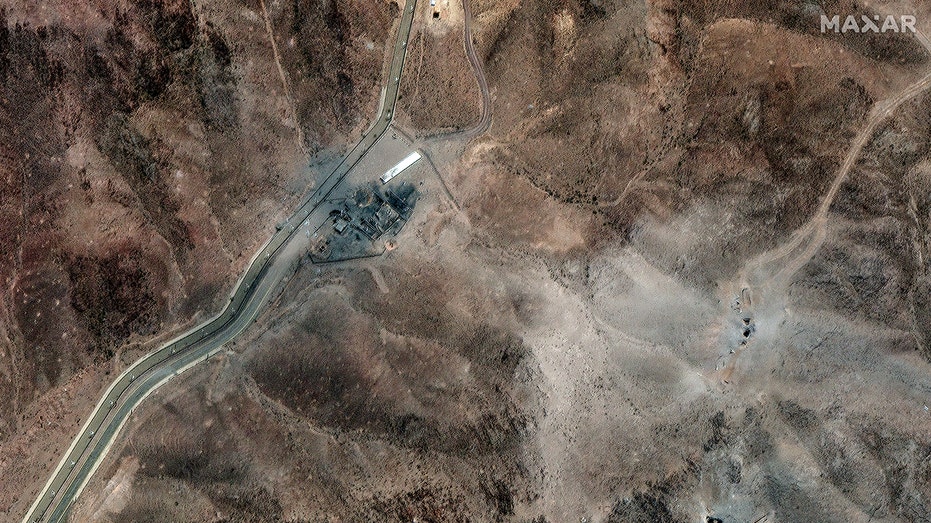2025-06-25
CNBC Daily Open: A truce is to be celebrated — but it doesn't promise peace
This is CNBC’s live blog covering Asia-Pacific markets.Asia-Pacific markets traded mixed Wednesday, as investors weighed a ceasefire between Israel and Iran, as well as fresh commentary from the U.S. Federal Reserve.There is growing optimism that a ceasefire between Israel and Iran brokered by U.S. President Donald Trump will likely hold.Australia’s S&P/ASX 200 was flat, closing at 8,559.2.South Korea’s Kospi climbed 0.15% to end at 3,108.25, while the small-cap Kosdaq fell 0.34% to end the trading day at 798.21.Japan’s benchmark Nikkei 225 rose 0.39% to 38,942.07, while the Topix closed flat at 2,782.24.Hong Kong’s Hang Seng index climbed 1.46% and mainland China’s CSI 300 rose 1.44% to 3,960.07.U.S. futures are near flat. Futures tied to the broad S&P 500 index ticked down 0.1%, as did Nasdaq 100 futures. Dow Jones Industrial Average futures lost 26 points, or 0.1%.Federal Reserve Chair Jerome Powell said Tuesday the Fed was committed to keeping inflation in check and would likely keep rates steady until there’s more clarity on how tariffs might affect prices.Powell said policymakers were “well positioned to wait to learn more about the likely course of the economy before considering any adjustments to our policy stance.”Overnight stateside, the three major averages closed higher. The Dow Jones Industrial Average climbed 507.24 points, or 1.19%, and closed at 43,089.02. The S&P 500 gained 1.11% to end at 6,092.18. The broad market index is now about 0.9% away from its 52-week high. The Nasdaq Composite advanced 1.43%, settling at 19,912.53. The Nasdaq 100 added 1.53% for a record close of 22,190.52.— CNBC’s Lisa Kailan Han and Brian Evans contributed to this report.Reserve Bank of Australia expected to cut cash rate in July, says CBAThe Reserve Bank of Australia is expected to cut its cash rate by 25 basis points to 3.6% in its July meeting, Commonwealth Bank of Australia wrote in a note after the release of Australia’s inflation data.The monthly consumer price inflation in May came in at 2.1%, below the 2.3% estimated by economists polled by Reuters.“A benign monthly CPI print in May and a steady labor market allow the RBA to move the cash rate back to neutral at a relatively swift pace,” CBA economists wrote, adding that they also expect a follow-up 25 basis points rate cut in August.“Today’s monthly CPI print capped off a flow of data that should provide comfort to the RBA that a swifter return of the cash rate to neutral is both manageable and needed,” the economists said.— Lee Ying ShanChina tech stocks rise as Beijing approves most new games this yearShares of gaming firms NetEase and Tencent rose Wednesday after China’s gaming regulator approved 158 publishing licenses in June, the largest number this year.The National Press and Public Administration said in a notice late Tuesday that it granted over a hundred new game licenses to the likes of Tencent, Baidu, NetEase and ByteDance, including a dozen imported games.NetEase’s shares listed in Hong Kong rose as much as 1.6%, extending gains of about 1% in its U.S.-listed shares. Moves in Tencent shares were relatively muted, rising as much as 0.6%. But its over-the-counter shares in the U.S. were up 1.97% overnight, according to LSEG data.Shares of the gaming developers had taken a beating when Beijing enacted an 18-month freeze on game license approval until early 2022.Since then, the number of licenses has been on a steady rise.The number of new game licenses rose to 1,416 in 2024, near the level seen in 2020, and is expected to match or exceed 2019’s level this year.— Anniek BaoAustralia’s inflation rate hits 6-month low as food inflation softensAustralia’s monthly inflation rate came in at 2.1% in May, hitting its lowest level since October 2024.This was lower than the 2.3% expected by economists polled by Reuters, and also down from the 2.4% in April.Data from the Australian Bureau of Statistics revealed that food and housing inflation also softened from the month before, while transport prices continued to decline.— Lim Hui JieOil prices climb over 1% after two sessions of declinesOil prices climbed over 1% in early Asia hours Wednesday after two sessions of declines stateside.U.S. West Texas Intermediate crude rose 1.34% to $65.23 per barrel, while global benchmark Brent was up 1.28% at $68 per barrel as of 9.18 a.m. Singapore time.This comes after oil prices tumbled for a second day Tuesday, as the market bet that a ceasefire between Israel and Iran would hold and the risk of a major crude supply disruption had faded.While there has been a brief recovery, the sharp decline in oil prices indicates the “continuing dominance of bears in the market,” said Alex Kuptsikevich, FxPro’s chief market analyst.—Lee Ying ShanChina doubles down on promoting yuan as confidence in U.S. dollar takes a beatingChina is devising more ways for foreign institutions to use the yuan, as international confidence in the U.S. dollar falters.The moves aim at challenging the greenback, experts said, even as the U.S. dollar remains by far the world’s predominant currency. The timing is favorable as the U.S. dollar index has tumbled more than 9% this year — while the offshore yuan has strengthened more than 2% against the dollar.“China appears to be accelerating its de-dollarization efforts, though progress remains uneven,” said Dan Wang, director of Eurasia Group’s China team.Overseas investors looking to diversify away from America and hedge against U.S. assets are also boosting the yuan, said Ning Sun, senior EM strategist at State Street Global.Read the full story here.—Lee Ying Shan, Evelyn ChengStocks close higher, oil tumbles for second straight dayStocks closed higher on Tuesday while oil slid, with investor appetite for risk growing on the heels of a ceasefire between Iran and Israel.The S&P 500 added 1.11% to finish the session at 6,092.18, while the Nasdaq Composite climbed 1.43% to 19,912.53. The Dow Jones Industrial Average advanced 507.24 points, or 1.19%, to close at 43,089.02.Oil tumbled 6%, extending a slide from Monday.— Brian EvansThe Federal Reserve will have enough weak economic data to cut interest rates by September, says Pantheon MacroeconomicsJoshua Roberts | ReutersThe Federal Reserve building is seen before the Federal Reserve board is expected to signal plans to raise interest rates in March as it focuses on fighting inflation, in Washington, D.C., on Jan. 26, 2022.A weakening in the labor market could give the Federal Reserve ample ammunition to cut interest rates in the fall, according to Pantheon Macroeconomics senior U.S. economist Oliver Allen.“The FOMC’s hesitation to commit to a particular course on monetary policy is understandable given the big uncertainties that remain around tariffs and their economic impact,” Allen wrote on Tuesday. “But we think the evidence of a marked deterioration in the labor market will be stark enough by September to convince the Fed to resume easing policy, despite lingering worries about inflation.”— Brian EvansThere could be more declines ahead for oil, says Piper Sandler Oil prices could slide further if the current range of $64 per barrel to $65 is breached, according to Piper Sandler. “The overnight news of a ceasefire between Israel and Iran resulted in Oil retreating further to $64-$65, and testing new support at last week’s breakout point,” chief market technician Craig Johnson wrote wrote in a Tuesday note. “If it fails to hold here, then a further decline below $60 is likely.” — Brian Evans





























![‘Love Island USA’ Delivers Most Shocking Elimination Yet, Leaving Fans On a Cliffhanger [Spoilers]](https://cdn01.justjared.com/wp-content/uploads/headlines/2025/06/love-island-usa-delivers-most-shocking-elimination-of-season-7-so-far.jpg)

















































